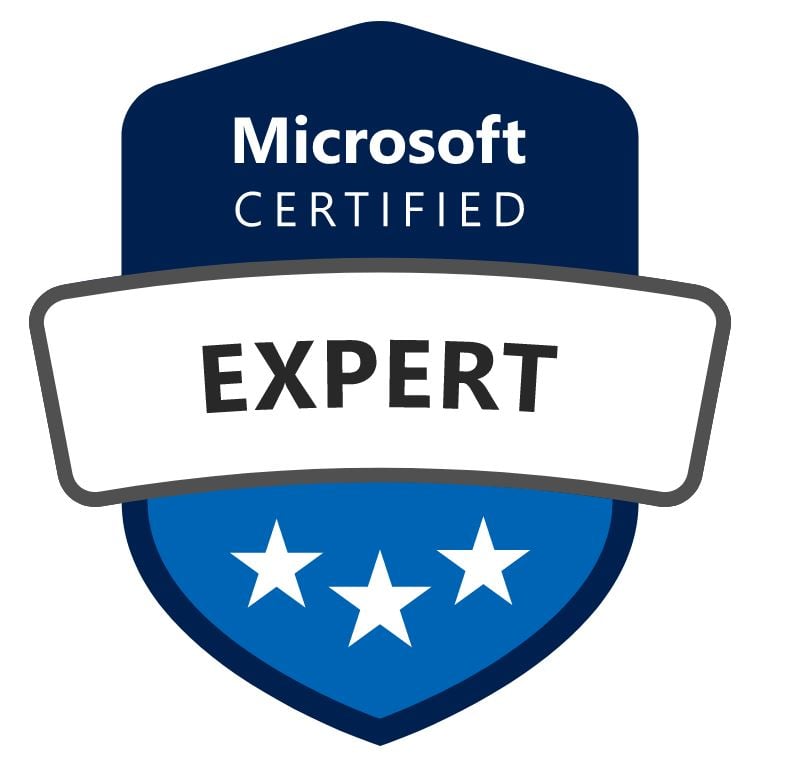Designing and Implementing Microsoft DevOps Solutions (AZ-400)
- Per deelnemer: € 2.195,00 excl. BTW
- Examen Upgrade: € 205,00 excl. BTW
-
4 dagen
-
Max 16 deelnemers
- Direct inschrijven

 4 dagen
4 dagen 
 Max 16 deelnemers
Max 16 deelnemers This AZ-400 course provides the knowledge and skills to design and implement DevOps processes and practices. Students will learn how to plan for DevOps, use source control, scale Git for an enterprise, consolidate artifacts, design a dependency management strategy, manage secrets, implement continuous integration, implement a container build strategy, design a release strategy, set up a release management workflow, implement a deployment pattern, and optimize feedback mechanisms.
Students in the AZ-400 course are interested in designing and implementing DevOps processes or in passing the Microsoft Azure DevOps Solutions certification exam.
Deze officiële Microsoft Azure training levert je het volgende op:
Onderstaande kennis en vaardigheden zijn benodigd om deel te nemen aan de AZ-400 training:
Het is raadzaam om eerst onderstaande cursussen te volgen:
Deze training wordt in het Engels en het Nederlands gegeven. Het bijbehorende examen wordt in het Engels afgenomen.
Bij deze training ontvang je digitaal Microsoft Official Courseware. De lestijden zijn van 9.00 tot 16.30.
Wanneer je je aanmeldt voor deze training, kun je een Examen Upgrade toevoegen voor het bijbehorende AZ-400 examen. Je ontvangt dan een examenvoucher (vereist om deel te nemen aan het officiële Microsoft-examen). Voordat je dit examen aflegt moet je eerst een van deze examens hebben behaald: AZ-104: Azure Administrator Associate of AZ-204 Azure Developer Associate:
Wij zijn blij met jou als loyale cursist. Daarom ontvang je 5% loyaliteitskorting op onze trainingen wanneer je je inschrijft voor een volgende training. Meer info over loyaliteitskorting.
Wil je na deze Azure training een aansluitende cursus volgen? Kijk dan eens naar een van onze andere Azure trainingen.
Module 1: Planning for DevOps
After completing this module, students will be able to:
Module 2: Getting Started with Source Control
After completing this module, students will be able to:
Module 3: Managing Technical Debt
After completing this module, students will be able to:
Module 4: Working with Git for Enterprise DevOps
After completing this module, students will be able to:
Module 5: Configuring Azure Pipelines
After completing this module, students will be able to:
Module 6: Implementing Continuous Integration using Azure Pipelines
After completing this module, students will be able to:
Module 7: Managing Application Configuration and Secrets
After completing this module, students will be able to:
Module 8: Implementing Continuous Integration with GitHub Actions
After completing this module, students will be able to:
Module 9: Designing and Implementing a Dependency Management Strateg
After completing this module, students will be able to:
Module 10: Designing a Release Strategy
After completing this module, students will be able to:
Module 11: Implementing Continuous Deployment using Azure Pipelines
After completing this module, students will be able to:
Module 12: Implementing an Appropriate Deployment Pattern
After completing this module, students will be able to:
Module 13: Managing Infrastructure and Configuration using Azure Tool
After completing this module, students will be able to:
Module 14: Third Party Infrastructure as Code Tools Available with Azure
After completing this module, students will be able to:
Module 15: Managing Containers using Docker
After completing this module, students will be able to:
Module 16: Creating and Managing Kubernetes Service Infrastructure
After completing this module, students will be able to:
Module 17: Implementing Feedback for Development Teams
After completing this module, students will be able to:
Module 18: Implementing System Feedback Mechanisms
After completing this module, students will be able to:
Module 19: Implementing Security in DevOps Projects
After completing this module, students will be able to:
Module 20: Validating Code Bases for Compliance
After completing this module, students will be able to:
Kosten per deelnemer € 2.195,00 excl. BTW
Max. deelnemers: 16
De genoemde cursustarieven zijn per persoon, exclusief 21% BTW ( BTW nummer wordt vermeld op de factuur), inclusief alle actuele lesmaterialen, een naslagwerk (Pdf) en een certificaat van deelname. Er zijn dus geen bijkomende kosten achteraf.
Als je je aanmeldt met een groep van vijf of meer personen voor een cursus op jouw bedrijfslocatie (in-company), dan kunnen wij een aantrekkelijk groepstarief aanbieden. Voor informatie over onze groepstarieven kun je telefonisch via 020 – 820 83 62 contact opnemen of hier een offerte aanvragen.
Werkgevers
Als werkgever kun je de volledige opleidingskosten voor werknemers aftrekken als bedrijfskosten. Dit geldt voor de opleiding zelf, maar ook voor andere kosten als boeken, inschrijfgeld, administratiekosten, het certificaat of extra begeleiding. Bij SignOn zijn al deze kosten al bij de prijs inbegrepen.
Heb je vragen of wil je meer informatie? Neem dan vrijblijvend contact op via info@signon.nl of bel ons op 020 – 820 83 62.
Kies de lesmethode die het best bij je past. Deze training kun je op de volgende manieren volgen:
Meldingen